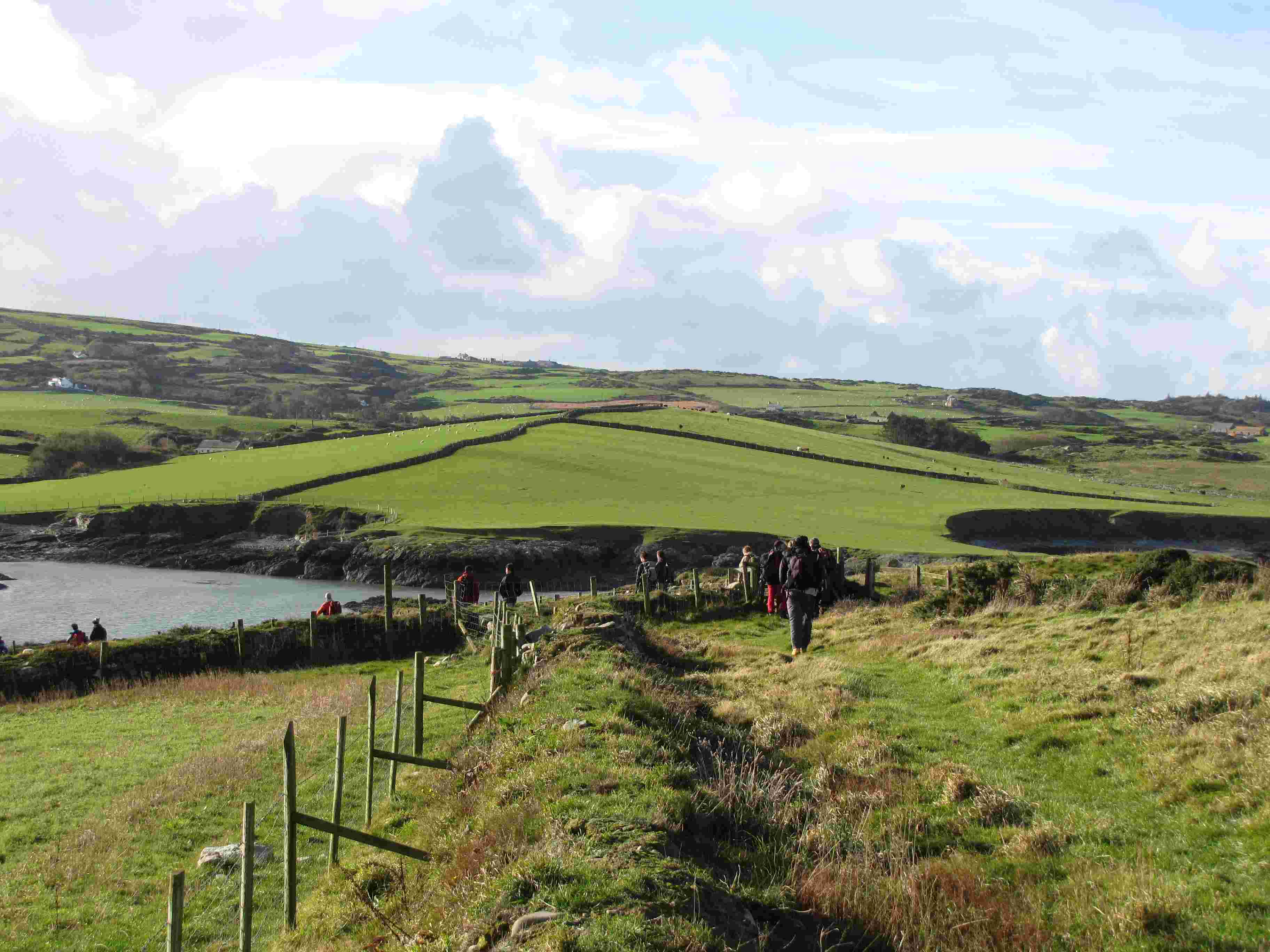
Drumlins are natural formations that have fascinated geologists and nature enthusiasts for centuries. These unique landforms, shaped like elongated hills or eggs, are found in various parts of the world and offer a glimpse into Earth’s intriguing geological history. In this article, we will delve into nine extraordinary facts about drumlins that will leave you in awe of their beauty and formation. From their origins during the Ice Age to their significance in shaping the landscape, drumlins are a testament to the dynamic forces that have shaped our planet. So, let’s embark on a journey to explore these remarkable features and unlock the secrets they hold.
Key Takeaways:
- Drumlins are unique hills formed by glaciers, found in various parts of the world. They provide valuable clues about past glaciers and support diverse wildlife, making them important for both science and nature.
- The distinct shape and alignment of drumlins make them easy to identify from above, helping scientists study glacial processes. Efforts to preserve and protect these landforms ensure their significance for future generations.
Unique Shape and Formation
Drumlins are elongated and oval-shaped hills that are formed by glaciers during the process of glaciation. These remarkable landforms can vary in size and can reach heights of up to 150 feet. The KEYWORD formation is a result of the movement and deposition of glacial material, creating their distinct shape.
Abundance in Geography
Drumlins are found in various parts of the world, particularly in regions that have been shaped by glaciation. They can be seen in areas such as northern Europe, Canada, and the northern United States. Their widespread distribution makes them an intriguing feature in the field of geography.
Directional Significance
One fascinating aspect of drumlins is their directional significance. These landforms tend to align in the direction of the glacier’s movement during their formation. This alignment can provide valuable insights into the direction and flow of ancient glaciers, helping researchers understand past climatic conditions.
Composition of Material
Drumlins are predominantly composed of glacial till, which consists of a mixture of unsorted sediment including boulders, rocks, sand, and clay. This composition gives them their distinctive appearance and makes them a valuable source of geological information.
Relationship to Other Glacial Features
Drumlins often occur in clusters or swarms, forming alongside other glacial features such as eskers, moraines, and kames. These interconnected features provide significant evidence of past glacial activity and help scientists reconstruct the history of the Earth’s ice ages.
Role in Landscape Evolution
Drumlins play a crucial role in shaping and transforming landscapes. Over time, these landforms can influence the course of rivers, create unique drainage patterns, and contribute to the overall diversity of landforms in glaciated regions.
Habitat for Diverse Wildlife
The slopes and sheltered areas of drumlins provide habitats for a variety of plant and animal species. From hardy grasses to small mammals and birds, these landforms support unique ecosystems that have adapted to the challenging conditions presented by drumlins.
Identification from Aerial View
Drumlins can be easily identified from an aerial view due to their distinct shape and alignment. This makes them valuable resources for geographers and geologists studying glacial landforms and processes using satellite imagery.
Preservation and Conservation
Due to their scientific significance and ecological value, there is an increasing focus on the preservation and conservation of drumlins. Efforts are being made to protect and manage these landforms to ensure that future generations can continue to study and appreciate their extraordinary characteristics.
As you can see, the 9 Extraordinary Facts About Drumlin shed light on the geological, environmental, and historical importance of these unique landforms. The KEYWORD formation and features have captivated researchers and continue to shape our understanding of Earth’s glacial past.
Conclusion
Drumlins are truly extraordinary landforms that have captivated researchers and geology enthusiasts for decades. Their unique shape, formation, and distribution across the globe make them a fascinating subject of study. From their association with glacial activity to their potential role in shaping landscapes, drumlins offer valuable insights into Earth’s geological history.
As 9 extraordinary facts about drumlins have been explored in this article, it becomes clear that these landforms are more than just picturesque hills. They hold important clues about past ice ages, provide habitats for various species, and even influence local weather patterns. Whether you are a geology aficionado or simply curious about the wonders of our planet, drumlins are a topic well worth delving into.
Next time you come across a rolling landscape showcasing elongated hills, take a moment to appreciate the remarkable story behind these drumlins. They serve as a testament to the immense power of glaciers and the ever-changing nature of our world.
FAQs
1. What causes drumlins to form?
Drumlins are formed by the movement of glaciers during periods of glaciation. The ice sheets sculpt the landscape, depositing material in the form of elongated hills with a tapered end pointing in the direction of glacier flow.
2. Where can you find drumlins?
Drumlins are found in regions that were once covered by glaciers, such as North America, Europe, and northern Asia. They are often concentrated in areas once occupied by ice sheets, such as parts of Canada, the United States, and Scandinavia.
3. Are drumlins only found on land?
No, drumlins can also be found submerged in bodies of water. These underwater drumlins are known as subaqueous drumlins and are often discovered in lakes and oceans that were once covered by glaciers.
4. Do all drumlins have the same shape?
No, while drumlins generally have a streamlined shape with a smooth, elongated profile, their sizes and proportions can vary. Some may be smaller and more rounded, while others can be larger and more elongated, depending on the specific glacial processes that formed them.
5. Are drumlins important for wildlife?
Yes, drumlins can provide crucial habitats for various species, including plants, animals, and birds. The sheltered sides and gentle slopes of drumlins offer ideal conditions for vegetation growth and nesting sites, making them important for biodiversity in glaciated regions.
6. Can drumlins influence local weather patterns?
Yes, the presence of drumlins can affect local weather patterns. These landforms can create microclimates by influencing wind patterns and affecting the distribution of precipitation. The shelter they provide can also impact temperature variations, making certain areas cooler or warmer than their surroundings.
7. How do researchers study drumlins?
Researchers use a variety of methods to study drumlins, including aerial surveys, satellite imaging, and ground-based investigations. By analyzing the shape, size, and internal structure of drumlins, scientists can gain insights into the processes that formed them and the environmental conditions during the time of their formation.
8. Can drumlins erode over time?
Yes, drumlins can undergo erosion over time, primarily through weathering and the action of water. As drumlins are composed of loose glacial sediment, they are susceptible to erosion by streams, rivers, and other forms of water flow.
9. Are all drumlins the same age?
No, the age of drumlins can vary depending on when they were formed during glacial periods. It is possible to determine the relative ages of drumlins in a particular area by examining their positions in proximity to other glacial features and by studying the glacial history of the region.
Drumlins' extraordinary facts captivate nature enthusiasts, geologists, and curious minds alike. From their unique formation to their role in diverse ecosystems, drumlins hold many secrets waiting to be explored. For those seeking more enigmatic and surprising facts, delving into the lives of Leonard Roberts and Orlando Jones promises to satisfy that curiosity. Roberts' story is shrouded in mystery, while Jones' journey is filled with unexpected twists and turns. Unraveling the tales behind these intriguing individuals will leave readers craving more fascinating insights into the world around them.
Was this page helpful?
Our commitment to delivering trustworthy and engaging content is at the heart of what we do. Each fact on our site is contributed by real users like you, bringing a wealth of diverse insights and information. To ensure the highest standards of accuracy and reliability, our dedicated editors meticulously review each submission. This process guarantees that the facts we share are not only fascinating but also credible. Trust in our commitment to quality and authenticity as you explore and learn with us.


